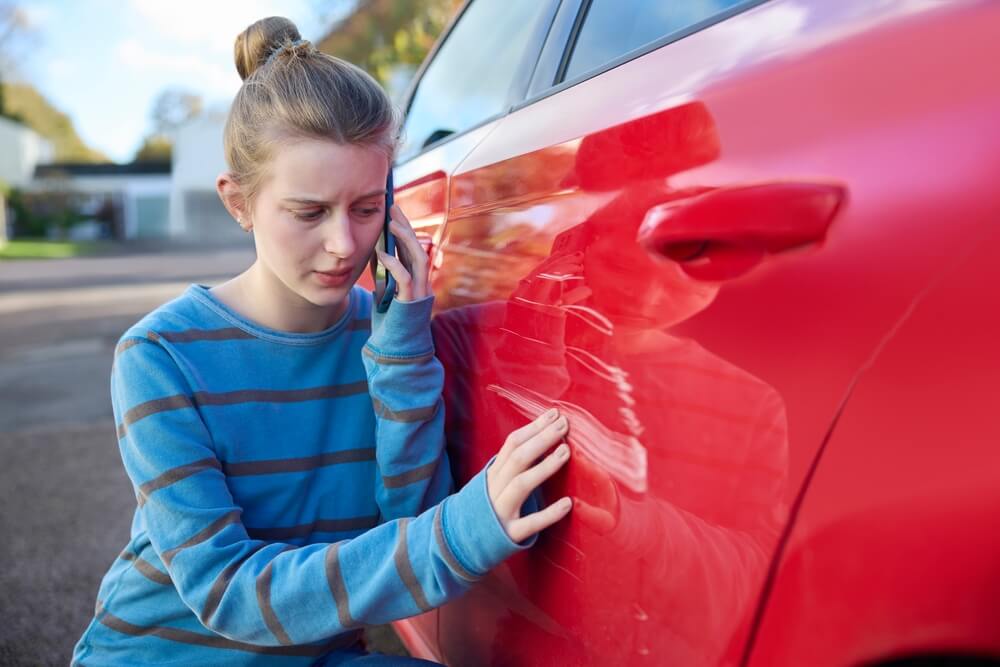Get the Cheapest Secondary Driver Insurance Coverage
Get secondary driver quotes from 50+ insurance providers.
Compare secondary driver car insurance quotes from top providers




Jump straight to:
- What is secondary driver insurance?
- Who is a secondary driver?
- What does secondary driver insurance cover?
- What doesn’t secondary driver insurance cover?
- When don't you need to add a secondary driver?
- The cost of adding a secondary driver to your policy
- Most recent secondary driver car insurance quotes
- How to get a secondary driver car insurance quote on RATESDOTCA
- How to save money when adding a secondary driver to your car insurance policy
- How do secondary driver car insurance claims work?
- Frequently asked questions about secondary driver car insurance
What is secondary driver insurance?
When you insure a vehicle leased or owned under your name, you are, by default, the "primary driver." Your insurer will use your personal information and driving history to determine your insurance premium and coverage. But what happens when you're not the only one driving your car?
If there is a person who uses your car regularly, you must add them to your policy. An insurance company could deny a claim if you haven’t listed all the drivers on your car insurance policy and one of them gets in an accident.
Who is a secondary driver?
A secondary driver is anyone who uses your car regularly. They could be a spouse, child or roommate with regular access to your vehicle.
An occasional driver can use the car daily or weekly to be included under your auto insurance coverage. Any person who you anticipate will use your vehicle consistently, even if only occasionally, must be included. This is a separate category of driver.
What does secondary driver insurance cover?
Secondary driver car insurance gives the listed drivers the same coverage as the primary policyholder. This means the coverage in your policy will automatically cover the secondary driver when they're using your vehicle.
What doesn't secondary driver insurance cover?
Secondary driver car insurance is coverage for extra drivers added to your car insurance policy. Named drivers typically have the same level of coverage as the policyholder. It's best to speak to your provider to ensure your secondary driver is protected under all the same coverages as you (or the primary driver).
When don’t you need to add a secondary driver?
When two people co-own a car, one person doesn't have to be listed as a secondary driver. They can each be listed as the 'named insured,’ making them both primary drivers. As co-named insureds, they both have the authority to change coverage, renew, or cancel coverage. The final premium will be based on each of their insurance histories, and they are equally responsible for making payments on time.
You also don't have to list secondary or occasional drivers for one-off events. For example, your personal insurance policy will extend to friends or relatives using your car to move it to a new parking spot or using it to run errands while you’re ill. You don't need to add these people to your policy.
The cost of adding a secondary driver to your policy
Your insurance costs will likely increase when you add another person to your policy, given that your car will get more use.
It also matters who you add. An inexperienced driver, like a teen with a learner's license, could result in a sharp increase. On the other hand, adding an adult driver with a full license and 20 years of experience behind the wheel will have a more muted effect.
However, the primary driver's record will still have a bigger bearing on the premium than the secondary driver's driving history.
The insurance company will need the secondary driver’s personal information to calculate the added cost. This includes the following information:
- Age
- Driving experience
- Tickets and fines
- History as an insured driver
Most recent secondary driver car insurance quotes

Recent auto Insurance Quote from Mississauga, Ontario
Male, 43 years old
2020 KIA STINGER GT V6 4DR AWD
July 12, 2025
Cheapest Quote
$ 270 / month
$ 3,244 / yearAverage Quote
$ 348 / month
$ 4,172 / yearSavings
$ 77 / month
$ 928 / year
22 %
Recent auto Insurance Quote from Simcoe, Ontario
Male, 23 years old
2022 MERCEDES-BENZ A220 4MATIC 4DR
July 12, 2025
Cheapest Quote
$ 268 / month
$ 3,215 / yearAverage Quote
$ 373 / month
$ 4,470 / yearSavings
$ 105 / month
$ 1,255 / year
28 %
Recent auto Insurance Quote from Hamilton, Ontario
Male, 23 years old
2023 NISSAN ALTIMA 2.5 SR 4DR AWD
July 12, 2025
Cheapest Quote
$ 628 / month
$ 7,531 / yearAverage Quote
$ 745 / month
$ 8,934 / yearSavings
$ 117 / month
$ 1,403 / year
16 %
What people say about our quotes

Based on 6,448 reviews

Amazing
Very helpful and easy to use
Safe travels

Easy quick selection of rates
Easy quick selection of rates
J K

Great help in finding the best rate!
Great help in finding the best rate! Thanks a lot!
Ruthielyn opina

I like how I can quickly I can select…
I like how I can quickly I can select travel insurance. The web site had an issue earlier but seemed to correct itself.
Dennis

prompt service
Respnded quickly, recommended company was excellent
Michael W.

Save time and money with rates.ca
I always use rates.ca for my travel insurance. They compare rates from several insurance companies and I can choose the package that suits my needs. I save time, frustration, and best of all, money. Thank you rates.ca, I will definitely be using your service again in the future.
customer
How to get a secondary driver car insurance quote on RATESDOTCA
Ready to compare quotes and save?
Tell us about your vehicle
Answer a few basic questions about your driving & car insurance history.
Compare your quotes
See quotes from insurance companies side by side.
Choose the right coverage
Find the right protection for your vehicle.
Get covered
Connect with the provider and secure your rate.
How to save money when adding a secondary driver to your car insurance policy
Adding secondary and occasional drivers to your car insurance policy can be expensive, especially if you intend to add multiple people. Here are some tips to help you save money when adding a secondary driver to your car insurance policy.
- Compare secondary driver quotes: Comparing quotes will allow you to secure the best deal and save money. On RATESDOTCA, you can instantly compare the best secondary driver car insurance quotes from Canada's top insurers within minutes.
- Be careful who you add: Consider the kind of driver you are adding to your policy. Are they a high-risk driver? What is their driving history? A reckless driver can result in a costly premium.
- Ask lots of questions: Ensure you know who qualifies as a secondary driver and what including them as part of your car insurance policy means for your premium. Consult your insurance company or broker if you're unclear about anything or want to add or remove an occasional driver.
How do secondary driver car insurance claims work?
Before delving into how claims by secondary drivers get handled, let's revisit what it means to be a primary driver.
The primary driver generally owns the vehicle and the policy. They are responsible for engaging with their insurance company on policy rules, deductibles, coverage, and claims.
The secondary driver uses the car (say, as the partner of the primary driver) but less frequently than the primary driver. The insurance coverage obtained by the primary driver will list the secondary driver on the policy, which ensures the coverage will extend to the secondary driver.
As a secondary driver, they cannot amend the policy, cancel it, or make claims. Therefore, the primary driver is responsible for making a claim on the secondary driver's behalf.
If your secondary driver gets into a situation where a claim must be filed, it'll impact the overall premium cost. Make sure you trust your secondary driver before adding them to your policy.
Frequently asked questions about secondary driver insurance
Here’s everything you need to know about having a secondary driver on your policy.
How can I find the cheapest secondary driver car insurance?
Finding the cheapest secondary car insurance quotes is fast and simple with comparison sites like RATESDOTCA. By providing us with some information on your driving needs, location and coverage requirements, RATESDOTCA will provide a variety of companies to choose from with the cheapest secondary car insurance rates around.
Also, if you already have primary coverage, you can speak to your provider or broker about add-ons like secondary coverage.
Adding a secondary driver to your premium will likely increase your costs as the risks become greater for the insurance company.
Which company has the cheapest secondary driver car insurance in Canada?
Consumers in Canada are lucky to have a variety of choices when it comes to their secondary car insurance coverage needs. Comparing secondary car insurance quotes on RATESDOTCA will provide you with multiple options for insurance providers.
You can also talk to your current insurance provider about add-ons and see if they have rates comparable to those offered by others in the secondary car insurance market.
Will having a secondary driver increase my car insurance premium?
Yes, typically, when you add a secondary driver to your car insurance policy, you can expect your premium to increase. The secondary driver's driving history and risk potential will determine how big or small the added cost will be. Keep in mind some companies do not charge to add an occasional/secondary driver depending on their age/driving record.
The increase will be relatively small if your secondary driver is a low-risk addition to your policy. A high-risk driver, on the other hand, will cause your premium to increase by a larger amount.
Can you remove an occasional driver from your car insurance policy?
Yes. Contact your insurer and submit the required documents to change your coverage. If the secondary driver is not using your vehicle, removing them from your policy will decrease your insurance premium.
Does a G1 driver need to be listed as an occasional driver?
No, you don't have to list a G1 driver using your car to learn how to drive. The driver should be added to your policy once they get their G2 or G driver’s license.











